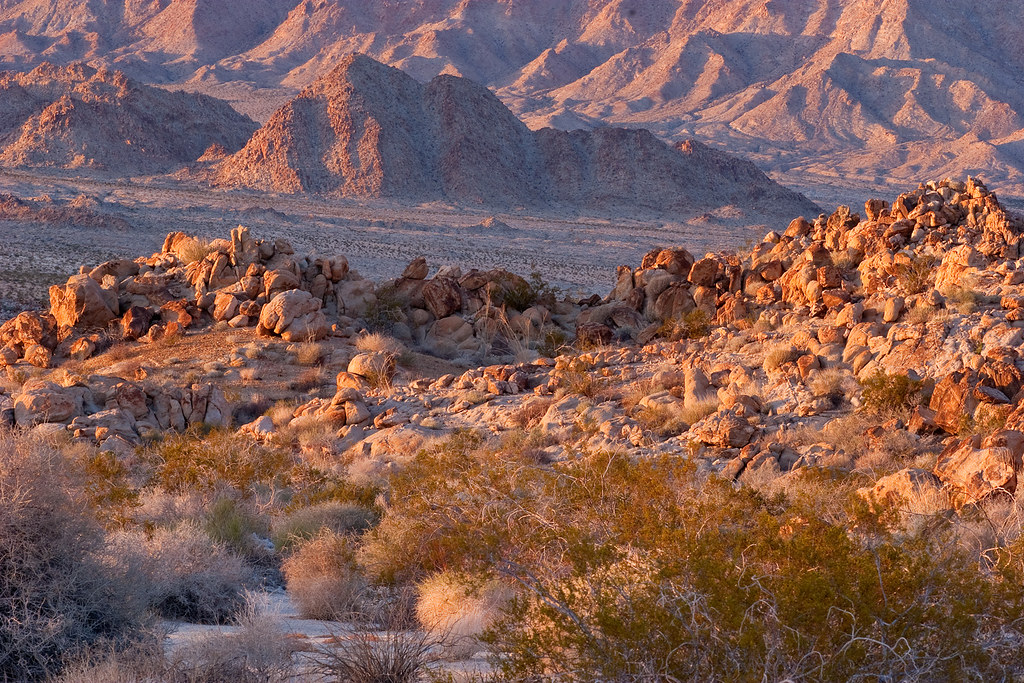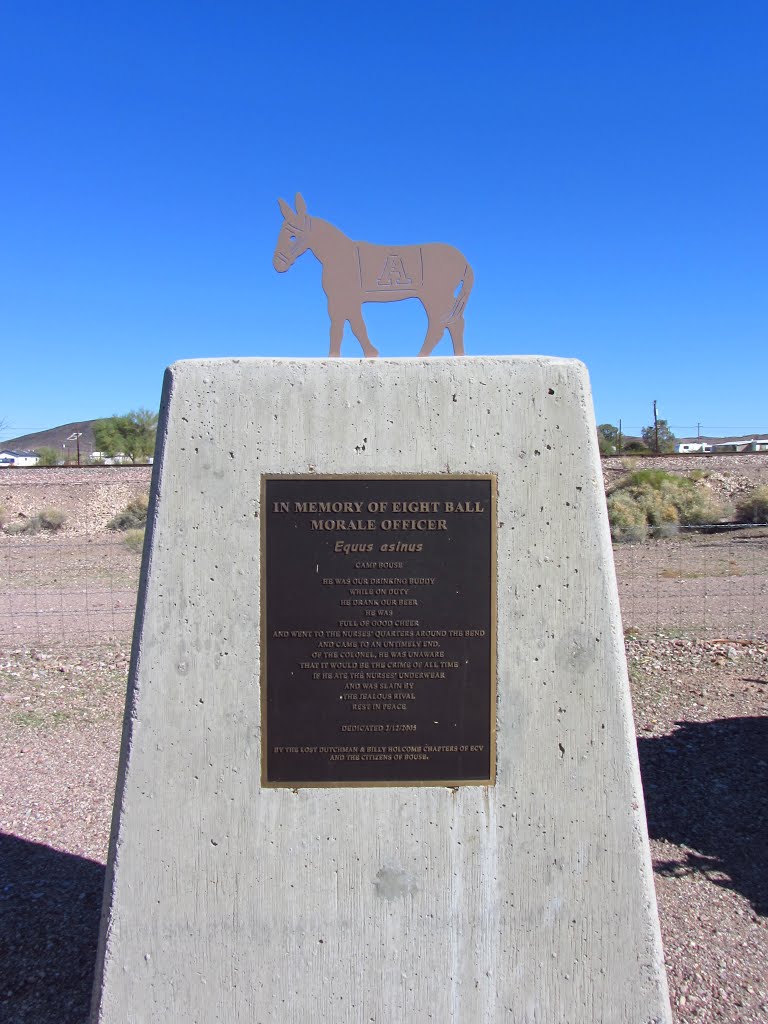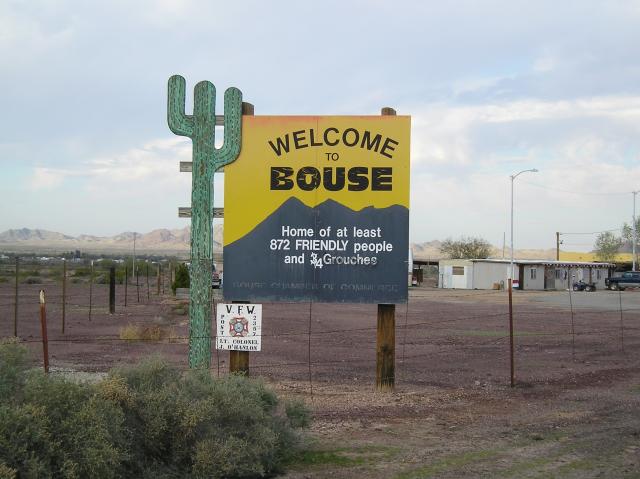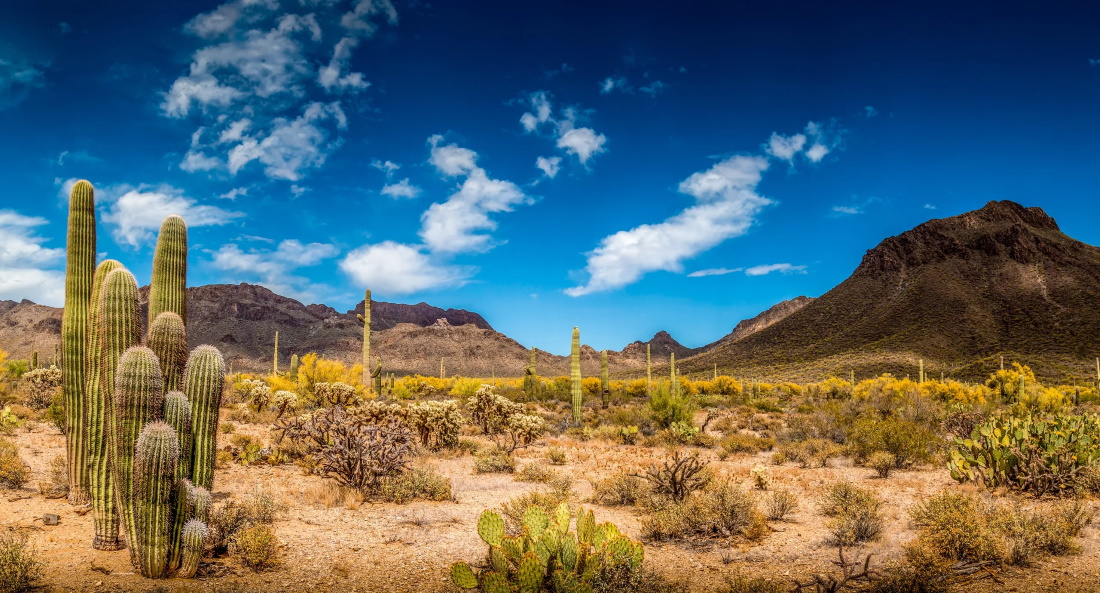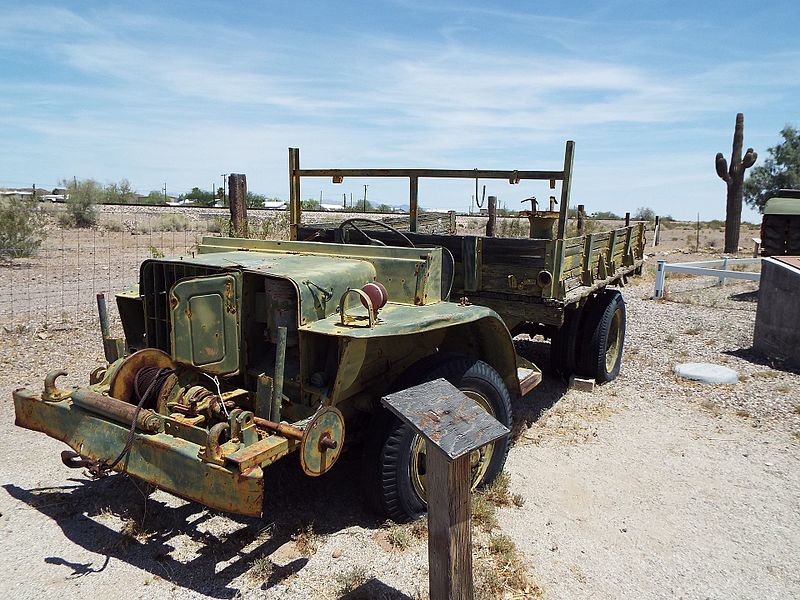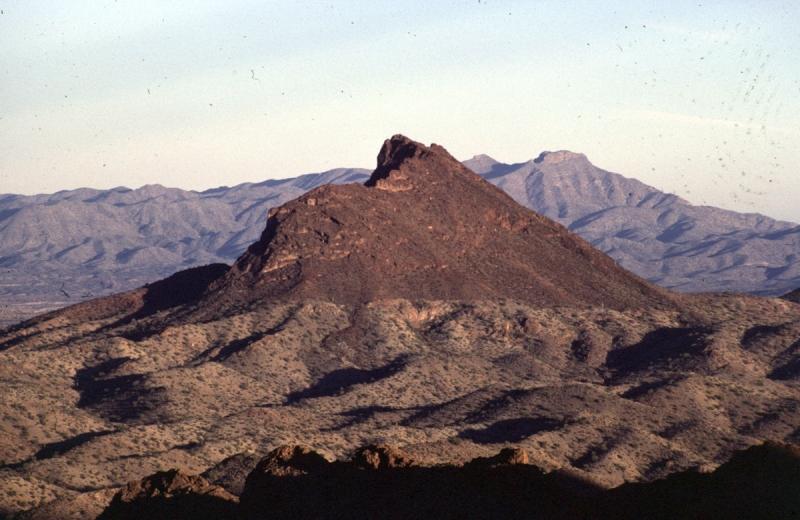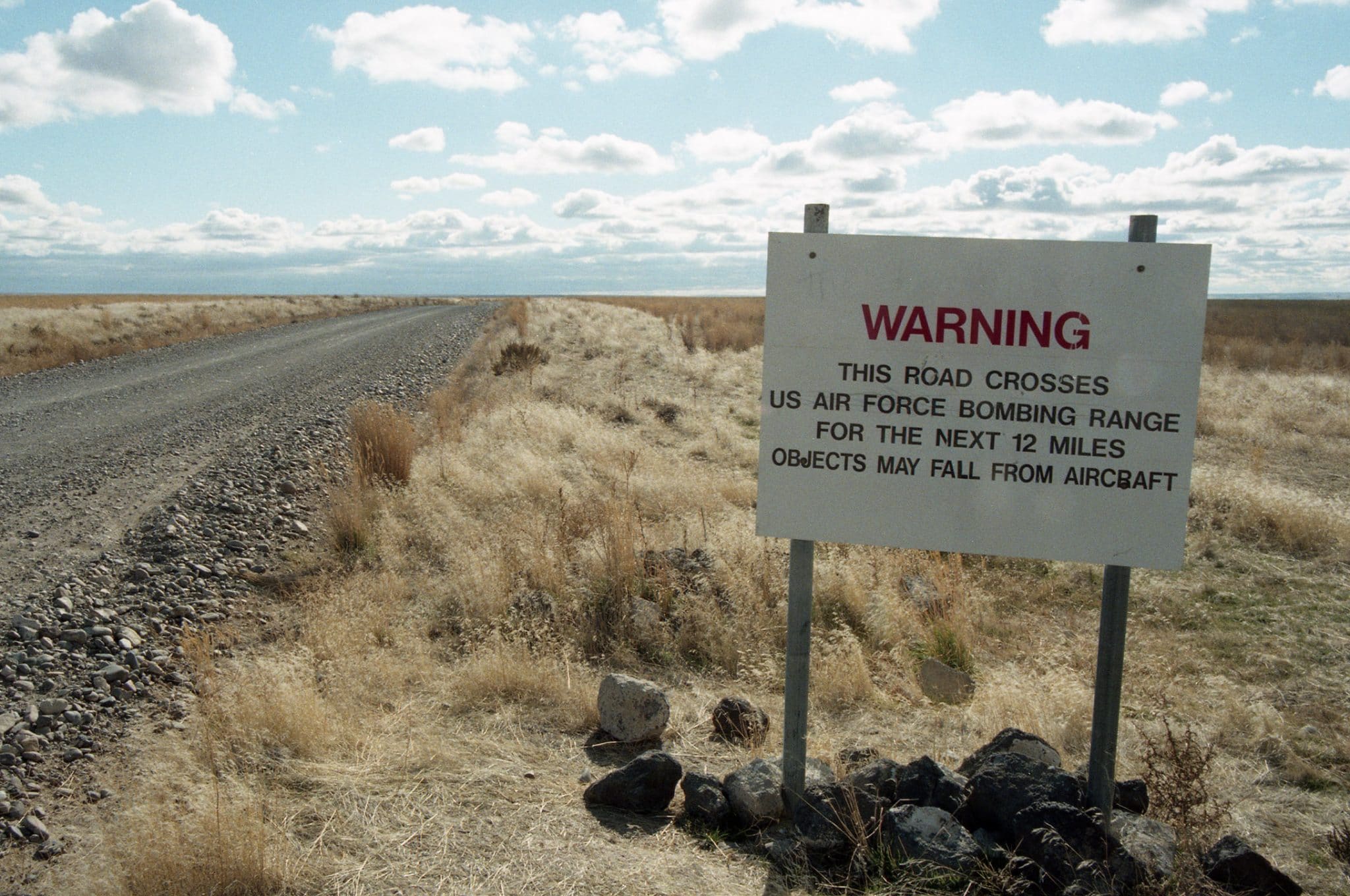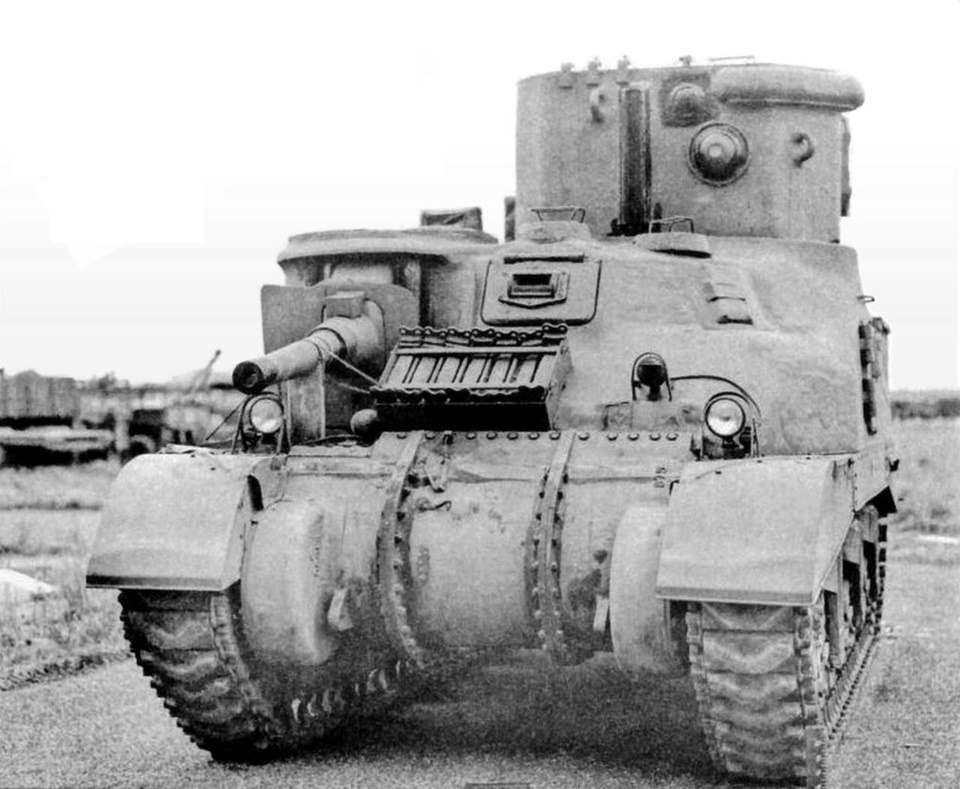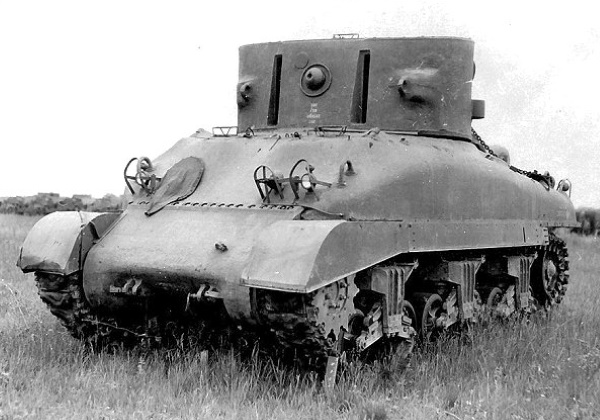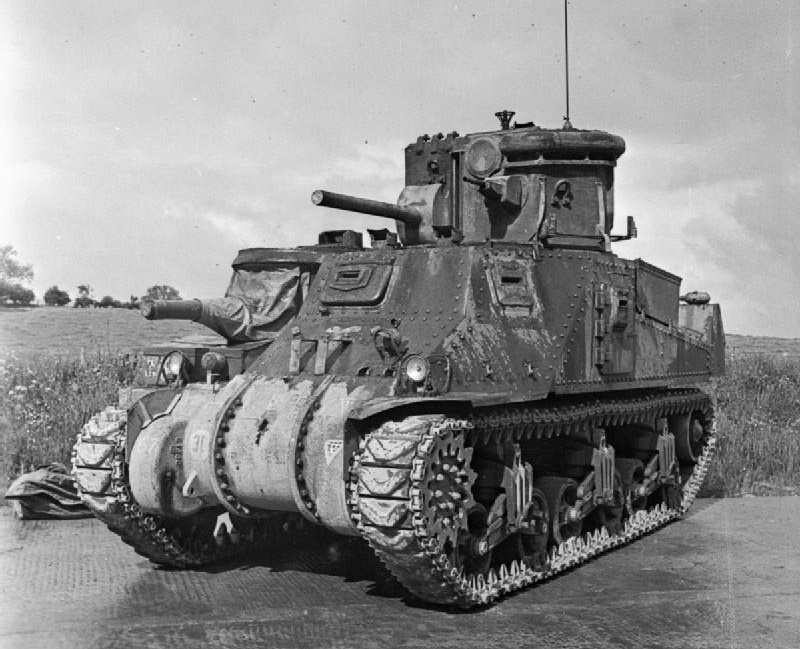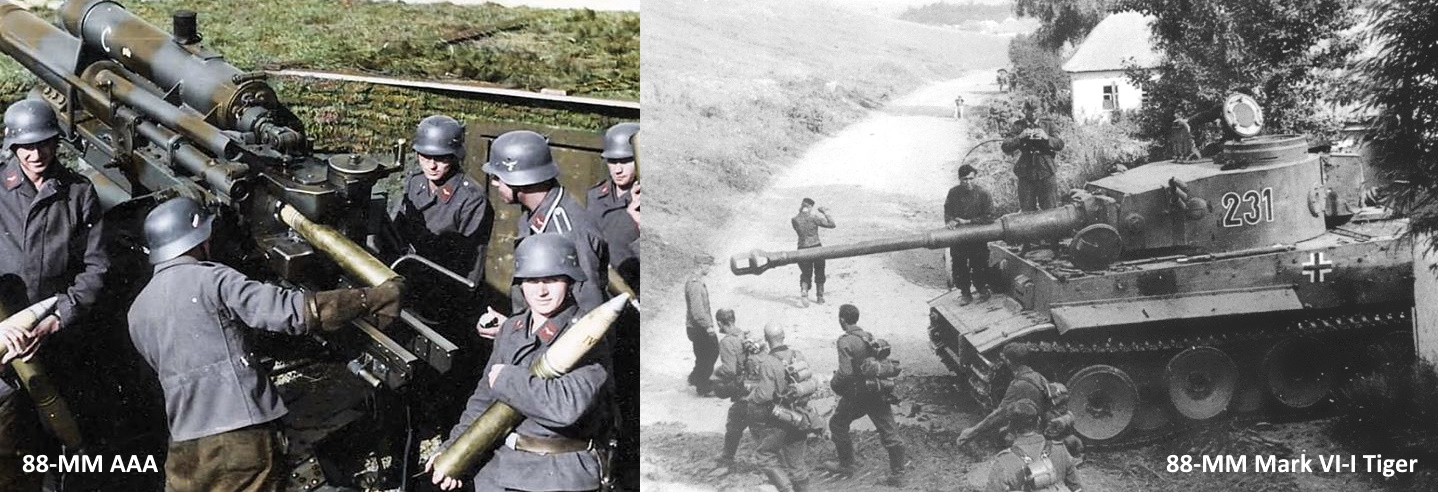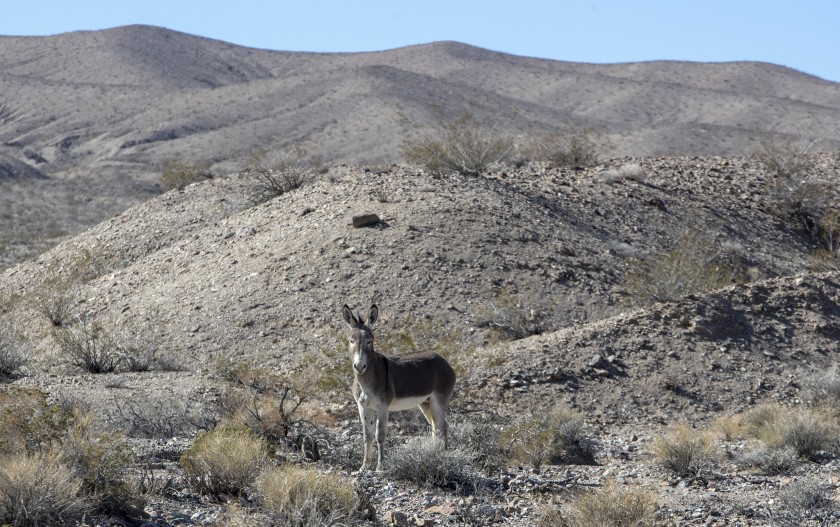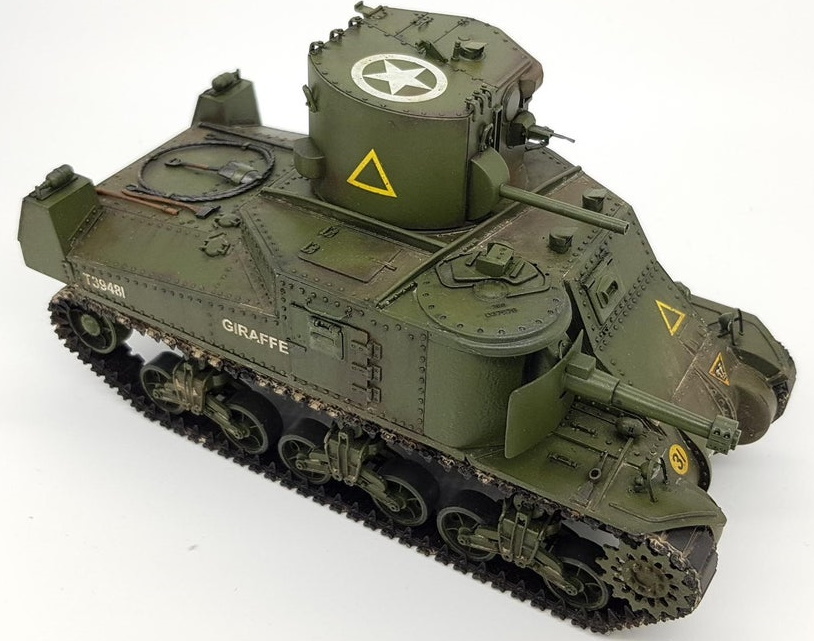The division landed in Japan in October 1945 for occupation duty and was inactivated in Japan on March 25 1946. Although unrecognized by the Department of the Army, the Hyder Campaign Medal still ranks high today among those who are aware of truly arduous service. In the words of one soldier who lost 30 pounds during the desert summer, The Hyder Ribbon is a strip of sandpaper on which is mounted a broken thermometer. If you fought at Palen Pass, you can mount one salt tablet on it, and if you climbed the Fourth-of-July Butte, you are authorized to wear on it one small cactus lobe.
Today, Camp Hyder, Arizona exhibits no monument dedicated to the 77th Infantry Division, except the two stone gate posts and rock-bordered company streets that pattern the barren desert. Who will light a Liberty Division torch at Hyder.
 The Order of Battle for the 77th Infantry Division was : Division HQ & HQ Co; 305th Infantry Regiment; 306th Infantry Regiment; 307th Infantry Regiment; 77th Reconnaissance Troop; 302nd Engineer Battalion; 302nd Medical Battalion; HQ & HQ Battery, 77th Division Artillery; 304th Field Artillery Battalion; 305th Field Artillery Battalion; 306th Field Artillery Battalion; 902nd Field Artillery Battalion; HQ Special Troops; 77th Division Band; 77th Quartermaster Co; 77th Ordnance Co, and the 77th Signal Co.
The Order of Battle for the 77th Infantry Division was : Division HQ & HQ Co; 305th Infantry Regiment; 306th Infantry Regiment; 307th Infantry Regiment; 77th Reconnaissance Troop; 302nd Engineer Battalion; 302nd Medical Battalion; HQ & HQ Battery, 77th Division Artillery; 304th Field Artillery Battalion; 305th Field Artillery Battalion; 306th Field Artillery Battalion; 902nd Field Artillery Battalion; HQ Special Troops; 77th Division Band; 77th Quartermaster Co; 77th Ordnance Co, and the 77th Signal Co.
To those who didn’t return: They shall not grow old as we who are left grow old; Age shall not weary them, nor the years condemn; To the going down of the sun, and in the morning; We shall remember them.
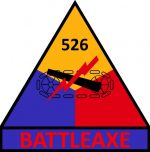 Camp Bouse & the Canderlight Caper
Camp Bouse & the Canderlight Caper
Camp Bouse was the mystery post of the California-Arizona Maneuver Area. This large tent city complex located in remote Butler Valley in western Arizona was the ideal location for the Ninth Tank Group (Medium) (Special) to train in absolute secrecy for American participation in the British developed Canal Defense Light (CDL) project in 1943-1944. In mid-1943, the US Army ordered the formation of a special tank group to be entirely manned by carefully screened, highly qualified volunteers. The order further stated that once selected to become a member of this elite unit, future transfers were prohibited and that they would train with … a weapon system that would change the course of the war …
 The Ninth Tank Group would subsequently consist of six tank battalions and one armored infantry battalion with the unit isolated in a remote part of Fort Knox, Kentucky, known as Area X, once the selection process was completed. Officers and men were assembled in the post theater for a security briefing where they learned that mail would be censored and the enlisted men would only be permitted to leave their compound in groups of five with a sergeant in charge. The rigid security precautions taken care of, the men of the Ninth Tank Group was introduced to their T-10 Shop Tractor or Gizmo as the troops affectionately called it.
The Ninth Tank Group would subsequently consist of six tank battalions and one armored infantry battalion with the unit isolated in a remote part of Fort Knox, Kentucky, known as Area X, once the selection process was completed. Officers and men were assembled in the post theater for a security briefing where they learned that mail would be censored and the enlisted men would only be permitted to leave their compound in groups of five with a sergeant in charge. The rigid security precautions taken care of, the men of the Ninth Tank Group was introduced to their T-10 Shop Tractor or Gizmo as the troops affectionately called it.
Security and secrecy became a way of life with some families firmly convinced their son was under military arrest when they were accompanied home on leave with their group and sergeant. Even today, there are former members of this special unit who firmly insist their project has never been declassified and will not discuss their participation with the CDL project or their training at Camp Bouse. While the troops trained in the technical side of the CDL project, a team of officers was sent to the CAMA to select a training area. Operating with blanket orders from Headquarters, Desert Training Center, the team determined that Butler Valley would be a suitable area for the practical training required for the Ninth Tank Group to become combat-ready. Butler Valley, approximately 20 miles east of the small village of Bouse, Arizona, is an isolated area 30 miles long and 10 miles wide, surrounded by high mountains that enhanced security.
Work began in late August to ready the camp for operations by mid-September. Baker Co, 369th Special Engineer Battalion, put in 45 miles of highway, laid out the camp, and manufactured the frames for supply, kitchen, and company headquarters tents. One large wooden building, 50 feet by 120 feet with a reinforced concrete floor was constructed for tank maintenance. A secure schooling area and the digging of a well was commenced. Because of the high degree of security required for the CDL project, a hospital with four buildings, a surgical clinic, surgical and medical wards, and a mess building were constructed in order to provide proper medical care within the Bouse complex rather than sending anyone to an outside medical facility. Hot and cold water was provided by boilers shipped in and a high-pressure steam sterilization plant was also constructed.
 In early September 1943, the 50th Station Hospital with 8 officers, 12 nurses and 45 enlisted men arrived in the desert from Mississippi. Originally scheduled for England, the group was sworn to secrecy and immediately confined to camp, much to the dismay of the nurses who felt that Lady Luck had been unkind, indeed. By September 10 1943, the camp was ready for occupancy except for good construction, which was incomplete. Mother Nature entered the picture at this time with one of her infamous high winds and thunderstorms which practically shushed the camp down Cunningham Wash. The hospital bore the brunt of the damage and was relocated near the command circle. The storm damage took one week to repair and subsequently delayed troop arrivals until mid-October.
In early September 1943, the 50th Station Hospital with 8 officers, 12 nurses and 45 enlisted men arrived in the desert from Mississippi. Originally scheduled for England, the group was sworn to secrecy and immediately confined to camp, much to the dismay of the nurses who felt that Lady Luck had been unkind, indeed. By September 10 1943, the camp was ready for occupancy except for good construction, which was incomplete. Mother Nature entered the picture at this time with one of her infamous high winds and thunderstorms which practically shushed the camp down Cunningham Wash. The hospital bore the brunt of the damage and was relocated near the command circle. The storm damage took one week to repair and subsequently delayed troop arrivals until mid-October.
The first train from Fort Knox arrived at the Bouse, Arizona rail water station at 2400 October 14 and the second movement came in the following day. Trucks hauled the men to their new homes. For many, this was a first introduction to the Great West. The 23-mile trip to Camp Bouse was made on newly built rough, rocky and dusty roads, and to make matters worse, the troops passed the remains of an ammo truck that had blown up scattering duds two hundred yards in all directions.
 The Ninth Tank Group, commanded by Col Joseph Gilbreth, was composed of the following units during their stay at Camp Bouse : 701-TB, 736-TB, 738-TB, 739-TB, 740-TB and 748-TB (Medium)(Special); 526th Armored Infantry Battalion (Medium)(Special); 50th Station Hospital (150 bed); 554th Ordnance Heavy Maintenance Company (Tank); 166th Quartermaster Battalion (Mobile) Headquarters and Headquarters Detachment; 629th Quartermaster Laundry (2 secs). The 629th QM Laundry Co was not actually within the Bouse Restricted Area but was stationed at the Bouse railhead. When offered the opportunity of joining the Ninth, the Negro soldiers declined to assert that anyone who goes in there never comes out. The men quickly discovered that everything in the desert had either a sting or a thorn as scorpions, rattlesnakes, cactus, Gila monsters and tarantulas contested the intrusion of the Ninth into their homeland. Also contesting the intrusions were local homesteaders who refused to leave Butler Valley when the Ninth arrived. This problem was quickly resolved with the artillery firing in close proximity. Where words failed, artillery muzzle blasts convinced. Butler Valley now belonged to the Ninth who shared it with jackrabbits and other desert creatures.
The Ninth Tank Group, commanded by Col Joseph Gilbreth, was composed of the following units during their stay at Camp Bouse : 701-TB, 736-TB, 738-TB, 739-TB, 740-TB and 748-TB (Medium)(Special); 526th Armored Infantry Battalion (Medium)(Special); 50th Station Hospital (150 bed); 554th Ordnance Heavy Maintenance Company (Tank); 166th Quartermaster Battalion (Mobile) Headquarters and Headquarters Detachment; 629th Quartermaster Laundry (2 secs). The 629th QM Laundry Co was not actually within the Bouse Restricted Area but was stationed at the Bouse railhead. When offered the opportunity of joining the Ninth, the Negro soldiers declined to assert that anyone who goes in there never comes out. The men quickly discovered that everything in the desert had either a sting or a thorn as scorpions, rattlesnakes, cactus, Gila monsters and tarantulas contested the intrusion of the Ninth into their homeland. Also contesting the intrusions were local homesteaders who refused to leave Butler Valley when the Ninth arrived. This problem was quickly resolved with the artillery firing in close proximity. Where words failed, artillery muzzle blasts convinced. Butler Valley now belonged to the Ninth who shared it with jackrabbits and other desert creatures.
Most of the old soldiers remember the meals being the finest of modified B rations which looked and tasted the same as dog food served with a coating of fine golden dust that seemed to hang in the air. Motivation suffered when the men were told they had one week to read their camp, prepare training schedules, and to submit to proficiency tests on their previous training. Police details of 400 men worked placing large rocks, almost a foot in diameter, in neat rows about the headquarters, chapel, post exchange, troop areas, and so on creating streets and sidewalks. A concrete sidewalk was constructed in the hospital area near the nurses’ quarters.
The backside of the Harcuvar Mountains became a massive firing range and a regulation machine gun range was built on the Buckskin Mountain immediately adjacent to the camp. To add insult to injury, the DTC edict that only limited ice was permitted did little to improve tempers when beer, chilled to 100 degrees, was sold at the PX. But the lack of a cold beer did not slow consumption if the beer bottle cap residue in the PX area today are any indication.
Others came to Camp Bouse at various times, arriving, for example, by milk trucks from the rail depot at Wickenburg, Arizona. Orders, identification, and security clearances were checked repeatedly at many checkpoints en route to Camp Bouse.
Replacements were required to submit to a search and when they finally arrived in the main camp, no one would discuss the CDL program. Instead, these few replacements were told to report to the school area for an electronics briefing the following day. Finally, the secret Gizmos began arriving in small quantities and a decision was made to train the first arrivals while the others continually policed the area. At last, the police details were reduced to 100 men per day, and eventually, everyone was involved in becoming combat-ready in the T-10.
At Camp Bouse, most training began at 1500 hours and would take most of the night as the Ninth Tank Group exercised and perfected small unit operations with a heavy emphasis on night platoon OPs. Supporting fire, time-on target, and split-second maneuvering became second nature. Weapons cross-training was begun and soon tank repairmen were handling mortars like professionals. More importantly, tactics and communications for moving and employing tanks were standardized between the British and the US CDL units. To further this standardization and to help in realistic combat training, a small cadre of UK officers was assigned to Camp Bouse shortly before its closure.
Other combat techniques honed to a high degree included night artillery fired directly over the camp with minimum clearance. This was done almost on a nightly basis so those who were having a rare evening for relaxation would not forget what they were training for. Sleep was hard to come by, but the troops adjusted.
Thanksgiving and Christmas Days 1943 brought some relief to the dull rations and intensive training when the traditional turkey, dressing and the trimmings were served to the troops, complete with dust. A Christmas present of a four-day pass gave the men an opportunity of seeing green grass, have some cold beer, and sleep in a real bed for a change. All this in groups of five and their sergeant! Then back to Happy Valley for more day-and-night firing, combat infiltration courses, fire, and movement against surprise targets of varying types at varying ranges. When orders were received to close the DTC, it was directed that the 739th and 749th, the last units into Camp Bouse, would remain to police the area and salvage as much government property as possible in preparation for closing the camp. Anyone who has seen army service will appreciate the following sentiment: We not only policed the camp and the desert valley surrounding it but what seemed the entire Southwest as well before we were finished. We took down all the tents, packed and shipped them … We delivered several hundred tanks and miscellaneous vehicles to the Bouse railhead … You will remember we talked of hauling and stacking rocks along neat, nice rows, well, we hauled them back into the mountains and on April 24 1944, we departed ‘Happy Valley’ and boarded the train for Fort Knox …
In 1950, the military again returned to Camp Bouse and the Happy Valley, this time to complete the policing of stray ordnance. Thirty-one tons of scrap were cleared and warning signs were posted at strategic locations alerting visitors not to molest stray objects or to do any sub-surface digging.
Camp Bouse is virtually intact today. A patchwork of graveled streets laces the area. On both sides of the streets are stone-bordered walks, parking lots and tent squares of various armored outfits. Each battalion had an inclined triangular insignia with the unit designation spelled out in white rocks. Most now are illegible because cattle have trampled the area. One is still untouched – 738th Tank Battalion Headquarters.
Also virtually intact is the site of the camp’s chapel which was evidently a large tent with neatly laid sidewalks in rectangles and triangles. In front of the chapel are two large stone squares with a white rock cross in each. The word Peace is solemnly spelled on white stones.
There are no buildings left, just a few concrete slabs which once held wooden barracks and stone houses. One bore the inscription: Headquarters Service. Dec. 8, 1943,, that had been scratched into the once wet concrete by someone with a flair for fine handwriting. The area is remarkably clear of litter. Even the ground looks clean, probably the result of hundreds of men periodically policing the area on hands and knees. The Army buried its trash, after burning it, along Cunningham Wash. Some of this junk is now being dug out by souvenir hunters. Like pot hunters in Indian ruins, they have dug test holes in the landfill dump, exposing the bits and pieces of military life. There are some rusted mess kits, a ruined machine-gun barrel, some rifle casings, hundreds of broken beer bottles, and some green glass Coca-Cola bottles. Much of the glass has been melted by the intense heat of the fires.
Just how long the tank tracks will remain is anyone’s guess. Desert vegetation like creosote bushes is slowly marking the damage, sprouting up in the tracks and breaking up the outlines of the deep depressions!
Thus far we have said nothing about the classified weapon involved in the Canal Defense Light Project in order to tell the tale of Camp Bouse and the Ninth Tank Group, its organization, and training. To complete the circle, the Canal Defense Light had its genesis during World War I when Commander Oscar de Thoren, Royal Navy, proposed the use of a searchlight mounted in an armored housing on a tank to be used to blind and dazzle the enemy during a night attack. The principle of light is based upon common knowledge that when bright light falls upon the eye, the pupil dilates to increase the amount of light falling on it. (Most children have experimented with this principle with a flashlight). The theory was that if a very bright light was shown through a mechanically driven shutter set to open and close with regular frequency, the onlooker would become virtually blind as his eyes would be continually trying to adjust to ever-changing conditions.
The British War Office turned the suggestion down in 1917 and again in 1922; however, in 1927 a field trial was carried out by the Mechanized Field Company, Experimental Mechanized Force, Great Britain’s armored force which determined that the idea held promise. In 1933, the De Thoren Syndicate was formed with Marcel Mitzakis as its manager, Maj Gen J.F.C. Fuller, technical advisor, and financing provided by the Duke of Westminster. The first trial took place in France in 1934 and the second, with improved apparatus, in 1936, this time with a War Office representative in attendance. Additional tests were made on the Salisbury Plain in 1937 and after many delays, a final test was done in June 1940. Ten days later the War Office took over the project and immediately ordered 300 CDL turrets.
With a working model, the British were anxious to demonstrate its capabilities. At Lulworth Range in Dorset, a volunteer agreed to drive the experimental tank in a live-fire exercise at some risk to his life. During the day, the range was swept clear of all previous tank tracks and a 25-pound field gun was emplaced with instructions to the gun crew that they were to fire and stop a vehicle using live ammunition. After dark and upon a given signal, the tank was driven on to the field, and while under fire from the 25 pounder, the driver maneuvered his tank from side to side, stopping, reversing, all the while keeping the light aimed at the gun using various color filters. Stopping the fire with a pre-arranged signal, the observers were asked to draw a line representing the path taken by the tank. Almost without exception, the officers drew a straight line from the starting point to their position. Then to prove his point, the driver turned and illuminated his track marks to the incredulous officers.
The first British units to train in the CDL project were the 1st and subsequently, the 35th Royal Tank Brigades, equipped with Matilda tanks. At one point, a limited number of Churchill and Valentine tanks were also converted to CDL configuration, but none of these vehicles saw combat. The Matilda and others in the CDL configuration were placed at a severe disadvantage for with their gun turrets removed and the CDL turret installed, they could not defend themselves. When the M-4 Sherman tanks replaced the M-3 General Lee/Grant tanks in the western desert in 1943, it was decided to convert some of the spare Grant tanks to CDL configuration. It was determined that the conversion could easily be made and the Grant had the advantage of having its 75-MM gun mounted in a sponson for offensive action.
To accommodate the CDL configuration, the searchlight turret was divided into two compartments. The operator sat on the left and operated his equipment which was located on the right side of the turret. The 13 million candlepower light came from carbon arcs mounted in the center and, through various reflectors, the light passed through a vertical slit to hit the target horizontally. The reflectors were made of polished aluminum which prevented the mirror from being shattered by machine gun or small arms fire. In fact, it was found that the light’s intensity was hardly affected even after repeated hits.
As mentioned earlier, a Scatter device was added to the vertical light slit which opened and closed six times a second giving a flickering effect to add to enemy confusion. In addition, various color filters were fitted to enhance the difficulty of estimating the ranges of a CDL tank from an enemy position. Under optimum operating conditions, the CDL light would cover a cone-shaped area beginning at 90 yards in front of the tank to a maximum of 340 yards wide by 35 yards high at 10.000 yards. Conceptually the combat deployment was to have 15 tanks advance line abreast, maintaining a 30-yard interval thereby providing a solid wall of light with supporting infantry following closely behind the vehicles.
As more experience was gained using the CDL tanks, it became clear that some of the earlier claims were exaggerated and that the blinding effect was not as great as originally believed. It was also determined that the German 88-MM AAA or Mark VI Tiger tank gunsight when fitted with a green sun filter actually enabled the observer to clearly see the slot through which the light passed. In time the CDL tanks were to become the weapon too secret to use but the hope that these tanks would overcome the problems of night combat lingered. The men and their Gizmo were ready for the call that would only come briefly and with little fanfare.
After Camp Bouse, the Ninth Tank Group was subsequently sent to Great Britain and assigned near Milford Haven where the entire Linney Haven Peninsula was turned into a CDL training area. Lord Louis Mountbatten and other high-level US officers were to see a night CDL demonstration and were sufficiently impressed to recommend to Gen Eisenhower, now the Supreme Allied Commander, that both the US and the British CDL forces would have to be deployed simultaneously in order to achieve maximum surprise. It was later directed that British Chiefs of Staff approval would be obtained prior to the CDL employment.
After the Normandy invasion, the Ninth was transferred to France some two months after the D-Day landings. The unit did not participate in the breakout as anticipated nor were the British CDL units used in Operation Epsom, the Caen fight as planned. The Ninth’s combat units were deployed with various divisions across the broad American front. Somehow the opportunity to use the CDL tanks in combat failed to materialize and most of the Ninth’s units were reequipped with Sherman DD (amphibious tank) and their Gizmos was withdrawn from service and sent to the rear. One company of the 426th Infantry Battalion was assigned to XII Army Group Headquarters for security and ceremonial duties.











